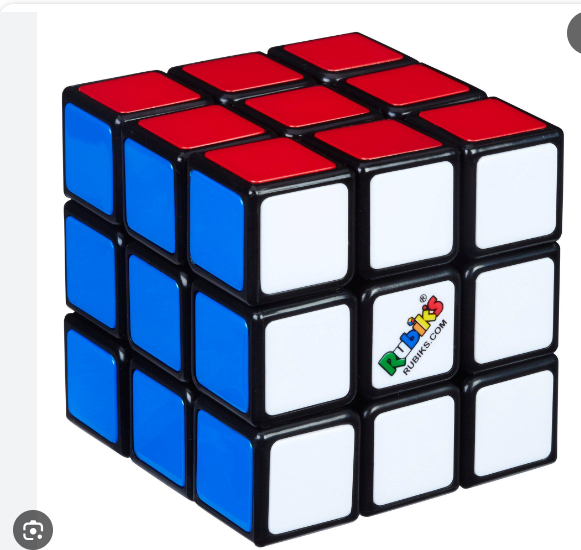By Ian Hamilton
The Orange County Register
(MCT)
Strap on the headset and adjust the goggle to your eyes. Look down and you’ll see the floor of a space station. Look up and pipes weave above your head. Turn left or right and the tight walls of a dark corridor flank your sides. An alien bursts through a door. Look at the monster, pull the trigger and mow it down.
Palmer Luckey cobbled the headset together from spare smartphone parts. His partner Brendan Iribe is rallying the videogame industry to build the games. The result is a relatively affordable, next-generation headset that eventually will allow players to disappear into virtual worlds.
Virtual reality experiences have been the stuff of dreams for decades, with movies such as “The Lawnmower Man,” “The Matrix” and the holodeck on “Star Trek: The Next Generation” popularizing the idea. So far, though, systems to take people to other worlds are expensive and built only for niche uses, such as military training.
Luckey and Iribe, the founders of Irvine, Calif.-based Oculus VR, have raised $2.4 million through online crowd funding to build a system that offers a virtual-reality experience to at-home gamers.
“It’s the future,” Luckey said. “It’s the matrix.”
The task facing anyone working on a virtual-reality experience is two-fold _ create a device inexpensive enough so people will buy it and improve upon the current state of gaming.
“If there’s not something additive or functionally better, it’s not going to catch on,” said Jesse Divnich, vice president in charge of analysis at video-game research firm EEDAR. “It has to do a better job than the market standard that existed before.”
Luckey and Iribe are trying to tackle both problems and look to succeed where others have failed. Luckey is using low-cost smartphone components to make a headset _ called the Rift _ that costs hundreds of dollars rather than thousands.
“A lot of things we’re doing weren’t invented by us,” Luckey said. “They were invented by other people. And we happen to have the luck to be in the right decade to make it happen.”
Luckey is the 20-year-old co-founder of Oculus. A passionate gamer, he’s also obsessed with virtual reality. His workspace is covered in disassembled gadget guts, and he’s like a walking encyclopedia of all things virtual reality, or VR. He perused government auctions, hospital liquidations and university sales to add to his collection of headsets, which is now more than 40. He also worked for about a year under Mark Bolas, a leading researcher in head-mounted displays at the University of Southern California.
“I’ve been doing VR for 25 years,” said Bolas, who hired Luckey on the spot after he contacted him for career advice. “He knew as much about the history of my products as I did.”
Luckey teamed up with 33-year-old Iribe after doing a demonstration for the gaming executive this past summer. They teamed up in August and used Kickstarter to secure $2.4 million in backing.
More than 5,600 people on the site, which is used by artists and entrepreneurs to bankroll projects, put up the minimum $300 to receive early developer versions of the headset. The Rift kits were slated to ship in December and January, but last week the company announced it would push back the ship date to March to provide more time to manufacture the gadget. They plan to ship 7,500 headsets.
Oculus leased office space in Irvine and started hiring in October.
That’s a long way from where Luckey was just a few months ago. He had duct-taped together a system in his garage earlier this year using motion sensors and high-resolution displays from smartphones. The parts make VR affordable because the proliferation of powerful handhelds in recent years drove up component quality while driving down cost, Iribe said.
The system eventually impressed executives at influential game companies Id Software, Valve Software, Unity and Epic Games. Luckey sent John Carmack, a father of modern 3-D gaming and co-founder of Id Software, one of his headsets and he showed off the system at E3, a gaming conference in Los Angeles. Carmack’s endorsement this summer sent Luckey and his growing Oculus team off on a whirlwind tour to gaming conferences around the world.
The Oculus strategy is to marry Luckey’s expertise and obsession with VR technology with Iribe’s industry experience.
Iribe co-founded Scaleform, which made a user-interface toolkit used on some of the biggest-budget video games. He sold that company to Autodesk in 2011 for $36 million. Then he worked for Aliso Viejo, Calif.-based Gaikai as chief product officer. Gaikai is working to make video games run in the cloud. That would introduce a new software paradigm allowing products such as Internet-connected TVs and tablets to run console- or PC-quality video games without expensive dedicated hardware or lengthy installations.
Sony bought Gaikai in August for $380 million. With Gaikai folding into Sony, Iribe moved to Oculus this summer and brought along some team members who worked with him at Scaleform.
“We started Scaleform (when I was) 19,” Iribe said. “We can help Palmer not make some of the mistakes we’ve made.”
There’s a running joke in the field that each year a scientist says next year is the year virtual reality will really take off, said VR researcher Jeremy Bailenson, who heads the Virtual Human Interaction Lab at Stanford University. He notes, however, that most of what’s needed for these immersive experiences are only recently finding their way into many living rooms.
“It’s already here,” he said. “We just don’t call it virtual reality.”
VR systems need to track movement, render a world and display that world, Bailenson said. Much of that is accomplished with increasing accuracy and detail by systems like Microsoft’s Kinect, which translates body movement into the movement of characters on screen for the Xbox 360.
What’s missing is turning that screen into a 3-D experience that fills up everything the user sees _ whether users turns their heads left, right, up or down _ and doing it at an affordable price. Sony, for example, ships an $800 headset that delivers 3-D but doesn’t deal with tracking. The Oculus Rift is designed to be the whole package.
“Sony and devices like the Rift are going to solve that problem,” Bailenson said of the display issue. “Is the world going to be phenomenally different in 30 years? Absolutely. Kids today, their medium of choice is video games.”
___
(c)2012 The Orange County Register (Santa Ana, Calif.)
Visit The Orange County Register (Santa Ana, Calif.) at www.ocregister.com
Distributed by MCT Information Services
—————
PHOTOS (from MCT Photo Service, 202-383-6099): CPT-GAME-GOGGLES





